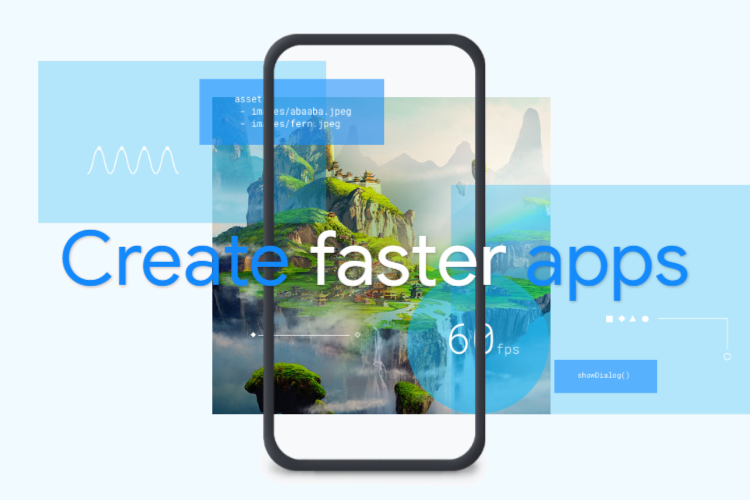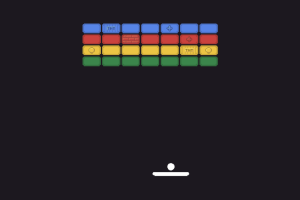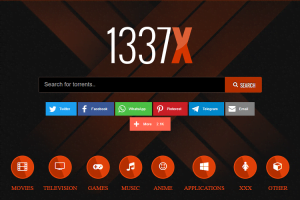The open-source framework Flutter lets developers construct natively compiled high-performance cross-platform applications from a single source code base. Multiple high-end applications like Google Pay, YouTube Create, Google Earth, Google Ads and eBay demonstrate the capability of the Flutter framework.

Flutter framework brings developers its compatible set of features including hot reload functionality with customizable user interfaces and widgets and cross-platform performance and more advanced features. Users who need to develop cross-platform applications through native features and capabilities should choose Flutter because of its exceptional set of characteristics.
Although there are many, this blog will guide you through all the significant pros and cons of using Flutter for app development. Being in the loop with the pros and cons will allow you to scale your project scope and hire Flutter developers capable of bringing your ideas to reality.
What’s Flutter?
Google developed the well-known Flutter framework as their solution for cross-platform application development. All programming needed to build Flutter comes from Dart and C in addition to C++. The development of Flutter started in 2015 until it became commercially available in 2017. Through this framework developers have the ability to develop cross-platform apps through one code base that supports different platforms.
The applications built using the Flutter framework support execution on Android, iOS, web, Fuchsia, macOS, Linux and Windows. Through this platform businesses can reduce their overall costs of developing individual native applications for multiple platforms. Organization’s adoption of Flutter app development allows them to harness significant performance advantages.
Pros of Flutter for Modern App Development
Cross-Platform Development
Flutter’s ability to deploy updates alongside bug fixes and features between different platforms cuts down development costs and work efforts substantially.
The cross-platform capabilities of Flutter enable resource-strapped startups and businesses to build multiple platform-specific applications at scale while preserving top-notch user experience across all targets.
Faster Development
Apart from building cross-platform apps with a single codebase, streamlined development with Flutter’s hot reload becomes the icing on the cake for developers and businesses alike. The very feature enables developers to see changes instantly without restarting the entire application. That level of enhanced real-time preview competency elevates developer productivity, simplifies UI experimentation, and makes debugging a breeze.
The faster application development with Flutter is valuable, especially in a collaborative environment wherein app designers and developers have the choice to tweak UI on the fly and measure the outcome immediately. It allows them to save hours they otherwise would have invested during the build-test-repeat cycle.
Rich and Customizable UI
Created with UI at its core, Flutter ensures a rich and customizable UI. Its widget-based architecture assists Flutter experts in building highly complex, customizable, and visually appealing user interfaces that closely depict the performance of a native app. With the help of Material Design and Cupertino libraries, Flutter provides enriched flexibility for building apps that are likely to adhere to iOS and Android guidelines.
Furthermore, using Flutter, developers can simply build custom widgets from scratch, which enables businesses to maintain an unmatched visual identity on a variety of platforms, ensuring a highly efficient customer experience.
Native-like Performance
Native-like performance is another one of the pros of using Flutter for app development. Directly compiled to ARM-native machine code, Flutter apps ensure smooth performance with minimized latency. It leverages the graphics engine, which helps redraw the UI at up to 60 or even 120 frames per second, which makes sure fluid animations and responsive interfaces.
In contrast to traditional hybrid frameworks that are likely to rely heavily on web views or JavaScript bridges, apps built with Flutter feel almost indistinguishable from native apps when it comes to comparing them in speed and performance.
Open Source and Community Support
Google has developed Flutter framework. Hence, it has complete backing for it and is completely open-source. It has a vibrant global community of developers. This allows Flutter developers to have access to a wider pool of documentation, third-party packages, sample apps, and community support forums.
Thanks to the collaborative nature of the Flutter ecosystem, which promotes streamlined and accurate knowledge sharing, problem-solving, and continuous innovation. This consistent and wider support makes it way more convenient for developers to stay updated and troubleshoot issues timelessly, ensuring a flawless app development experience.
Scalability and Performance
Enhanced scalability and performance are some of the pros of Flutter for modern app development. No matter whether you’re building a complex enterprise-grade application or a small MVP, Flutter’s modular design and high-performance rendering pipeline enable applications to scale flawlessly.
The competency to reuse widgets and logic across multiple platforms is highly efficient in supporting long-term maintainability. Flutter is combined with optimized memory management and asynchronous programming capabilities in Dart. It enables the framework to ensure your app remains high-performing even when the user demand scales.
Backed by Google
Google provides active involvement to ensure that Flutter remains well-maintained, future-proof, and reliable. Consistent updates tend to introduce bug fixes, additional features, and elevate performance, allowing developers to be confident about the framework’s longevity.
Not only external users but Google’s adoption of Flutter for many of its own application development, for example, Google Pay, Google Ads, and Stadia companion apps, demonstrates the trust in the platform’s competencies for production-level performance. It makes Flutter one of the most preferred choices for application development.
Also Read – Why Flutter is Best for Mobile App Development
Cons of Flutter for Modern App Development
Large App Size
Larger size of applications is one of the major drawbacks of app development with Flutter. Flutter apps have a powerful rendering engine and cross-platform competencies, which lead to increased application size. Because they include the Flutter engine and compiled assets, Flutter apps, in general, carry a larger binary footprint.
The larger binary footprint is more likely to be a considerable concern for users on devices with a certain storage or slower internet connection. It may affect the users in circumstances where the app size significantly affects download and user retention rates.
Limited Third-Party Libraries
The increasing number of libraries in Flutter’s ecosystem makes it less probable to find the broad variety and extensive depth of third-party libraries which other frameworks possess. flutter suffers from a growing ecosystem which trails behind multiple established frameworks including React Native and native SDKs when it comes to third-party plugin offerings.
Some specific tools and integrations which Flutter does not support require developers to write custom solutions. For those Flutter developers relying heavily on niche SDKs or hardware integrations, the very limitation is more likely to lead to additional time, effort, and expense when building an application with extraordinary features and functionalities.
Also Read – Top Mobile App Development Frameworks
Lack of Platform-Specific Features
Lack of platform-specific features in Flutter is another one of the cons. There are some platform-specific features or APIs that are less likely to be completely supported by Flutter. So, if you need it, you have to use third-party plugins or write platform-specific code. The generic application strength of Flutter shines through while it shows difficulty in accessing platform-specific APIs and OS-level features.
Developers face situations where they need to produce Java/Kotlin Android platform code and Swift iOS platform code by using platform channels. The process of integrating Bluetooth and device sensors and background services alongside the single codebase can become harder as it requires additional effort which reduces the process benefits.
Limited Support for Some Native Features
Flutter provides limited, low-level native functionality, which is one of the cons of using Flutter for app development. Advanced accessibility, background tasks, and real-time push notification services are less likely to be completely supported in Flutter. This causes Flutter developers to rely on community plugins (most often lacking updates and documentation) or create custom bridges to native code.
It not only slows down the app development process but also creates maintenance challenges down the line.
Dart is Less Common
The Flutter framework runs on the Dart programming language, which was created by Google to deliver contemporary language functionality. Following JavaScript and Swift as well as Python, Flutter stands as one of several popular choices but doesn’t command as much market adoption. The limited supply of tech talent and the difficult process to find skilled Flutter developers create difficulties for companies attempting to bring on board new talent or experienced team members.
Organizations considering Flutter for a longer period of time have to invest in extending their recruitment efforts and train them to have proficient Dart experts to work efficiently on a project.
Steep Learning Curve
A steep learning curve is another one of the drawbacks of opting for Flutter for modern application development. Flutter is relatively simple and straightforward for developers who are familiar with Object-Oriented Programming (OOP) concepts, however, it can be difficult to learn for those following the traditional app development process.
Flutter’s widget-based structure and declarative programming model happen to be completely different from the traditional mobile app development process. This initial learning curve is more likely to be steep, especially for those developers familiar with imperative UI frameworks or unfamiliar with Dart. Therefore, these developers or teams might need time to adapt to Flutter’s unmatched paradigms and best practices.
Flutter Web Limitations
Limited support for web is the next one of the cons of Flutter. Although Flutter supports web development, it is not yet as mature as its mobile counterparts, posing challenges for web development. These challenges include larger bundle sizes, limited support for SEO optimization (due to single-page app architecture), along with occasional rendering quirks across browsers.
The web experience in Flutter for web is improving with each update, however, developers developing content-heavy or SEO-critical applications may find it not suitable for them, as the traditional frameworks are more suitable for that now.
When Should You Choose Flutter?
Now that you have come to know the pros and cons of using Flutter for modern app development, it is time to dig a bit deeper and know when you should opt for Flutter. It’ll help you know and point out the right scenario when you should choose the right framework to get your project done.
You should choose Flutter:
- When you need to build apps for multiple platforms using a single codebase.
- When you need a high-performance application.
- When you prioritize speed and agility in development.
- When you wish to have a rich and customizable UI.
- When you need a framework with a wider and more active community.
- When you need faster time-to-market.
- When you have limited resources and a budget.
- When you wish to have a consistent user experience.
- When you want strong community and ecosystem support.
- When you are targeting users from different platforms.
- When you value long-term scalability.
When is Flutter Not the Right Choice?
Although there are times when choosing Flutter can be the right choice, there are circumstances when you better not opt for Flutter for building an application. Look at the pointers below.
When not to choose Flutter
- When you have a platform-specific requirement that is less likely to be well-supported by Flutter.
- When you need to build a small-sized app.
- When you prioritize a certain native UI experience that may not be easily replicated in Flutter.
- When you need high-performance games or data-intensive applications.
- When you have a small app size requirement (like Instant Apps)
Wrapping Up
Being a robust and versatile framework, Flutter framework provides a wide range of advantages for modern app development. However, with every benefit, there come some drawbacks, too, and this blog discusses them very well. This blog revealed the granularities of Flutter’s pros and cons for building modern applications, enabling you to anticipate the future of your project.
If you feel any queries remain unanswered, you should get in touch with a Flutter app development company to get not only the answers to those questions but also appropriate Flutter development services, bringing your idea to success.


